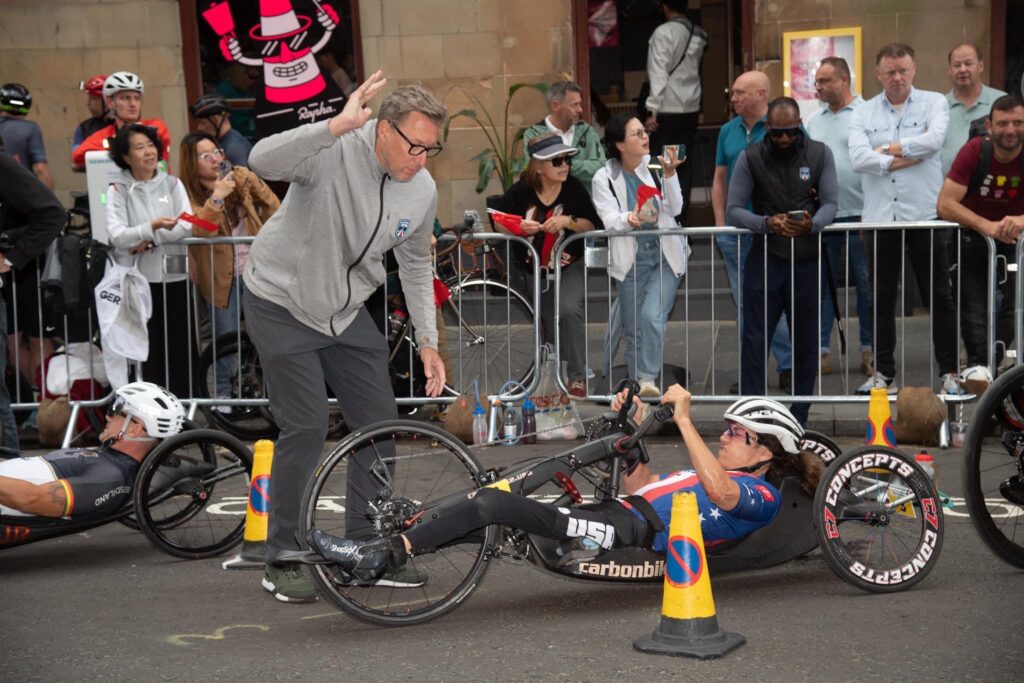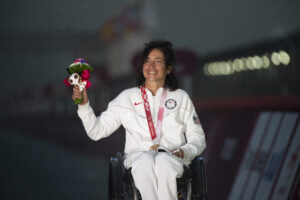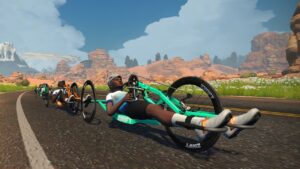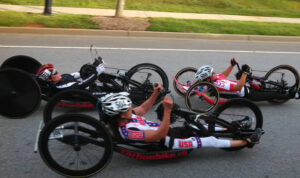Perhaps you’ve just gotten yourself a new handcycle and are raring to go. Or maybe you’ve been riding recreationally for some months or years and are thinking about getting competitive. Either way, handcycle racing is exciting, a chance to test your physical and mental fitness, and a great way to meet new friends. I’ve been a competitive handcyclist for over 20 years, during which time I’ve been continuously challenged, rewarded, and in many ways fulfilled by this unique sport.
Whatever your starting point may be, in terms of fitness, equipment, goals, time and other resources, you will likely not have everything you need to get started – but that shouldn’t be a barrier to jumping in. You will inevitably “learn by doing” as the journey progresses – every race will teach you more than a few things, and if you’re up for the challenge, you’ll take note, make adjustments and see progress unfold rapidly.
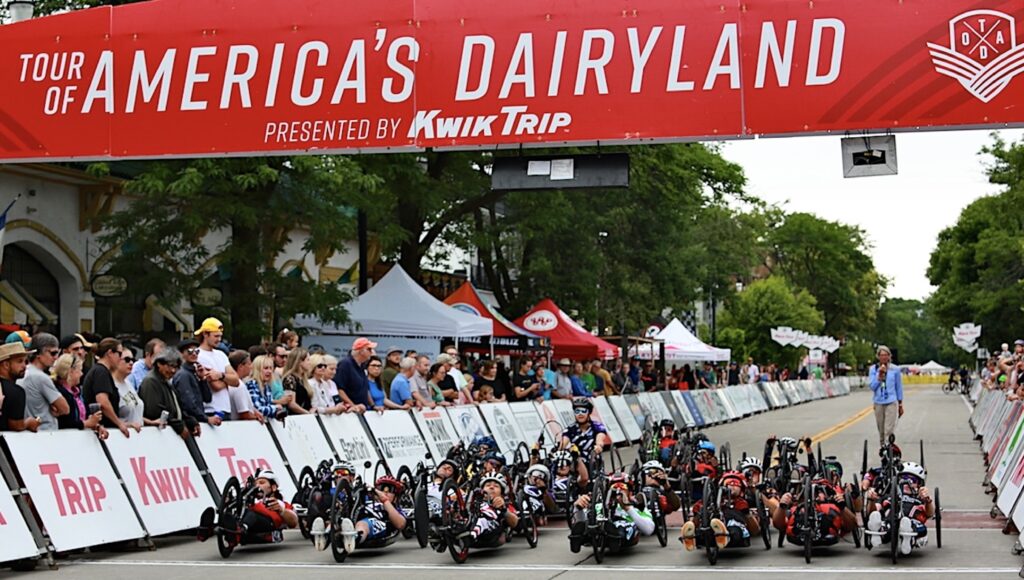
About races and how to find them
Handcycle races are becoming more prevalent, though expect to have to travel – they’re scattered throughout the country. Some are hosted by running clubs in conjunction with running races, and can be marathons, half marathons, or even shorter events. These tend to be the most “relaxed” races, as far as rules for handcyclists goes: you don’t need to have a particular classification or race license, for example, and riders are often on a wide range of equipment, from recreational to top of the line racing handcycles. With the exception of some of the more major marathons like Boston, there will likely be a pretty open and relaxed playbook. Other races are held alongside able bodied bike races; these are usually hosted by USA Cycling (www.usacycling.org), the national governing body for the sport of cycling. To enter a USAC sanctioned race, you’ll need to purchase a race license. You’ll also need to be already classified, or arrange to get classified at the event, if it is being offered. Finally, there are a few stand-alone handcycling-specific or larger paracycling (inclusive of other adaptive cycling categories besides handcycles) events. These are often held by rehab centers, adaptive sports organizations, or other organizations along those lines. US Paralympics Cycling, the national governing body for paracycling, hosts at least one competition per season. (www.usparacycling.org).
There is no one, all-inclusive handcycle race calendar in existence. One has to search – Facebook groups like “Handcycle” and “Handcycling”, for example (where you’ll also encounter a lot of used equipment for sale, equipment advice, and more), are go-to sites. US Paralympics has an ‘Events’ section on their website which will list their 1 or 2 hosted races, the National Championships, and the main international competitions hosted by the Union Cycliste Internationale (UCI), the world governing body for all cycling disciplines. Though USA Cycling has a race calendar, unfortunately there is not yet a search filter for paracycling events.
Classification
Classification is a system developed to both define who is eligible to compete in para sport, as well as assign eligible athletes to a specific sport class based on the nature and degree of their disability. The idea is to “level the playing field” and ensure that athletes are not unfairly disadvantaged because of their disability but, instead, are competing on the merits of athleticism, skill, and personal ability against those who share – roughly – the same amount of physical impairment. The process involves physical evaluation by certified classifiers, and can take more than one phase to reach a “Confirmed” status (though one can still race while under “Review”, the first phase.) The basic format for handcycling sport classes is H (for handcycle) followed by a number 1 through 5. Where you fall on the spectrum is based on the nature and degree of your disability. The most disabled is 1; 5 the least. Just as an example, a high level quadriplegic would be an H1, a double amputee who can use a kneeler handcycle would be a 5. As mentioned above, you will need to be classified in order to compete at USA Cycling sanctioned races, US Paralympics competitions, and some high-profile marathons, such as Boston. Sometimes classification is available at these events, so be sure to find out in advance, and get yourself on the schedule. To find out more about classification, email NPCUSAclassification@usopc.org, or check out https://www.usopc.org/paralympic-classification-information.
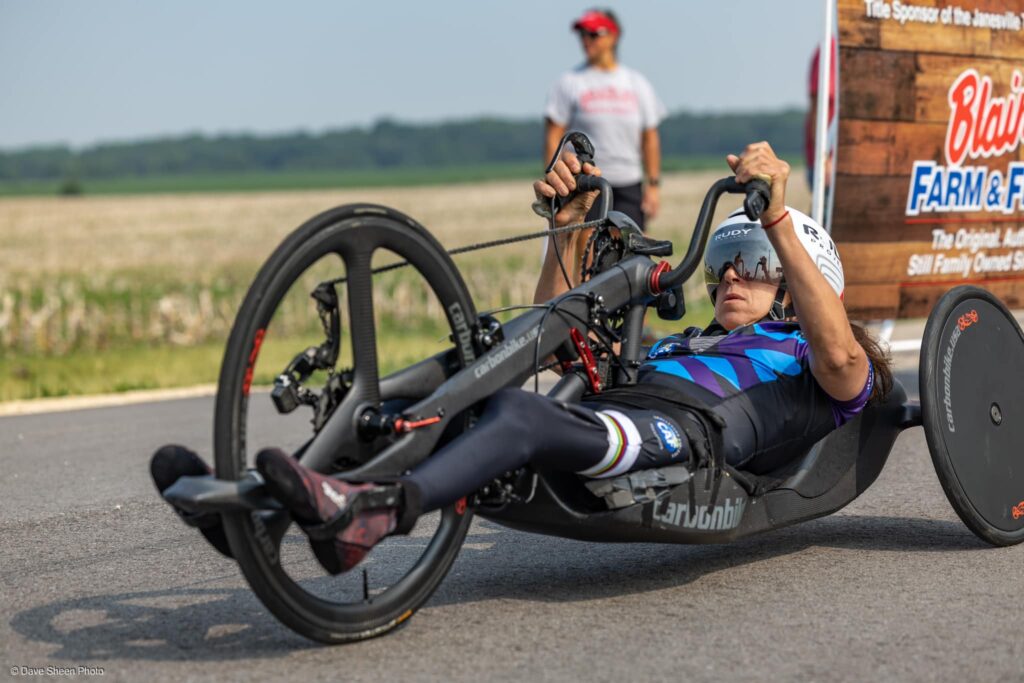
What to expect – Time Trial, Road Race, Criterium, Handcycle Relay
If it’s not a one-day race, like a marathon, a typical weekend includes a time trial, a road race, and often either a criterium or handcycle relay. These 4 different kinds of races each require their own kind of effort and skill.
The weekend usually kicks off with the time trial. TT courses vary in length, but a typical distance is around 15 km (9 miles). Each athlete is given a specific start time, and riders are spaced at 30 sec or 1 minute intervals. From the moment the 10 second countdown by the race official reaches “go”, your job is to ride as fast and as hard as you can for the duration. It is a race against the clock; the rider with the fastest time wins. The particular challenge of a TT is its intensity. Being able to hold an intense effort over the course of 30-40 minutes is a difficult challenge indeed. You’ll need to stay mentally focused throughout, and dig deep to keep the effort high. Drafting off of other riders you may catch is not allowed. A common mistake of beginning racers is to start off a TT too hard, then not have enough left to really finish strong. It’s a balancing act that takes time to get comfortable with – go too hard too soon and you’ll burn out before you’ve gotten home; save a little too much and you’ll have crossed the line having lost valuable seconds. Finding the right amount of effort to be able to sustain, yet having completely emptied yourself by the time you’ve crossed the line is the challenge. A time trial should hurt – be willing to go there. Just don’t “go into the red” in the first 10 minutes if you can help it!
The road race is a much different challenge. These courses are longer – generally covering 25-45 miles, depending on one’s race class. The course itself is often a circuit – a loop that’s covered some number of times. Road races are a mass start: depending on the size and nature of the event, there may be different start times for each class; groups of similarly paced classes; or, everyone might start together, regardless of class or gender. Whatever the case may be, a pack of riders will start at once, in what is often a fast-paced acceleration. From there, things will quickly start to thin out, as riders find the wheels that they’re able to follow, and latch on for the draft.
Drafting is the key to survival in a road race – one saves as much as 40% of your energy by tucking oneself as close as possible to the rider in front of you, thereby decreasing wind resistance. Draft bars are there for a reason, and without being deliberate, aggressive or annoying, you should have no worries about hitting the bar in front of you, or by being hit from behind. Ideally, a pair or a group of riders will take turns “pulling” – being the first rider in line – and then pull off to the side to let the next rider come through, in a rotating paceline. Working together in this way, a pair or small group of riders can be very efficient in saving energy and increasing speed. The key is to try not to let a gap open up to the rider in front of you – unless you can close it right away, you are likely to be dropped. In that event, your choices are to go hard and try to catch up, or ride alone (time trial) until another rider or group catches you, then grab a wheel and hold on while you recover.
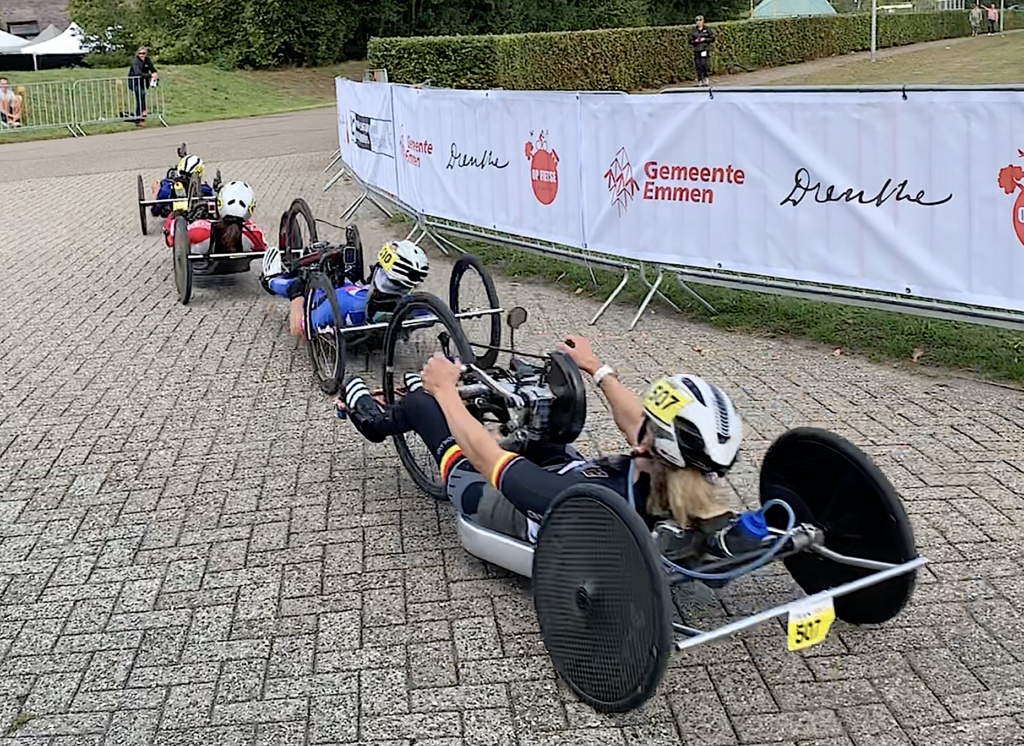
Other race tactics and strategies come into play in a road race – attacks, pacing, sprint finishes, skillful cornering, etc. One can read books on this topic, watch bike racing, and otherwise delve into the intricacies of this “chess game on wheels” aspect of the sport. For a beginner, simply staying safe, upright, and working in a paceline and not getting dropped are reasonable goals to master.
A beginning racer might feel some nerves before a road race, and for good reason. There’s a lot going on, and you can’t always control what’s happening around you. Try to relax, have faith that your mind and body and bike will respond as needed to situations as they arise. Remind yourself that this is an opportunity to learn the skills of racing, no matter your result, and that you’ll grow in valuable experience just by putting yourself out there. Go hard, but keep a cool head – keeping the rubber side down should be a top priority.
Some race weekends also include a criterium, or even a handcycle relay. Crits are a mass start race that circles around a few city blocks for the duration of 30-40 minutes. They are fast and furious, with lots of turns – good riding technique and comfort with riding in a pack at high speeds are important skills. As in the road race, drafting is key; try to find a rider or group of riders at a similar speed that you can work with. With a turn every 3-400 meters, crits demand a certain type of effort that combines short, hard efforts (acceleration out of the turn and down the next straightaway) with recovery (slowing for the turn and through it). Tip: If you’re not near the middle or front of your group going into a turn, it’s easy to be spat out the back (as the front riders accelerate out of the turn, you’re still entering or going through it more slowly; they’re halfway down the next straightaway before you can catch them again). To avoid this, if you’re at the back of the pack, try to move up alongside the riders in front of you before the turn, then slot in again as you come out.

With a crit’s relatively short course and multiple laps, it’s common for the fastest riders to lap the field, at least once. If you are not one of the fastest, the race ends for you when these top riders have completed their final lap. For a crit of, say 30 minutes duration, race officials will time the first riders’ lap times for a lap or two, then calculate an estimated number of laps for the race that will fill up 30 minutes. Then, each time you go through the Start-Finish area, a lap card will display the number of laps remaining; chances are, the announcer will also call out this information. Just keep in mind that you may not end up completing as many laps as the faster riders due to the race being concluded on their finishing lap.
The handcycle relay, usually only offered at the national championships and world cup/world championships/paralympic games, is exciting, intense, and a great spectator event. It involves teams of 3 riders, where each rider alternates turns of a 1-2 mile loop, for a total of 3 laps each. This is a “mixed” relay: teams are made up of riders with different classifications. Each classified rider carries a certain number of points (see chart), and teams can’t exceed 9 points total. In addition, each team must have at least one 2-pt rider.
| Men H1/2 2 pts | Women H1/2/3 2 pts |
| Men H3 3 pts | Women H4/5 3 pts |
| Men H4/5 4 pts | *no more than 9 points/team; each team must have at least one 2 pt rider* |
Teams decide amongst themselves in what order their riders will go. It can be tricky to develop a strategy for this, particularly if you don’t know what other teams are doing. A generally followed pattern is to start with your mid-fastest rider, follow with your slowest, then finish with your fastest. Whatever order you choose, your starting rider will line up across the road with the other starting riders. The other 2 teammates will queue up alongside the road past the start line, in coned off lanes that are perpendicular to the road. A support person for your team (coach, race official, friend, etc) will be the eyes and “handler”, letting you know when to go, and helping you get re-positioned in your lane after each lap. As the first rider on your team crosses the line, they must continue to race past your lane line. When they have crossed this line (your lane’s cones), your handler will signal for you to go. When you’ve done your lap and reached the finish, again, you must race past your lane line, then slow down rapidly (but safely) and allow race officials, volunteers, or whoever is there to direct you across the road again when safe, for re-positioning into your queue. This sequence gets repeated til each team member has ridden 3 laps. A unique event in the sport of cycling, the relay is an intense, intervals-type workout. An all-out effort for a duration of around 3-5 minutes, followed by waiting at a standstill for 6-10 minutes, followed by another all-out effort, is a demanding yet exhilarating experience. While waiting in your lane for your next interval, try to keep your arms moving, drink some water or other fluid, eat a gel, and otherwise try to keep your body primed and mind focused for the next big effort.
Still with us? Good. Stay tuned for the second part of Alicia’s blog that will cover what to expect when you’ve found your race (getting to the race, race day prep, race day, and more)!
